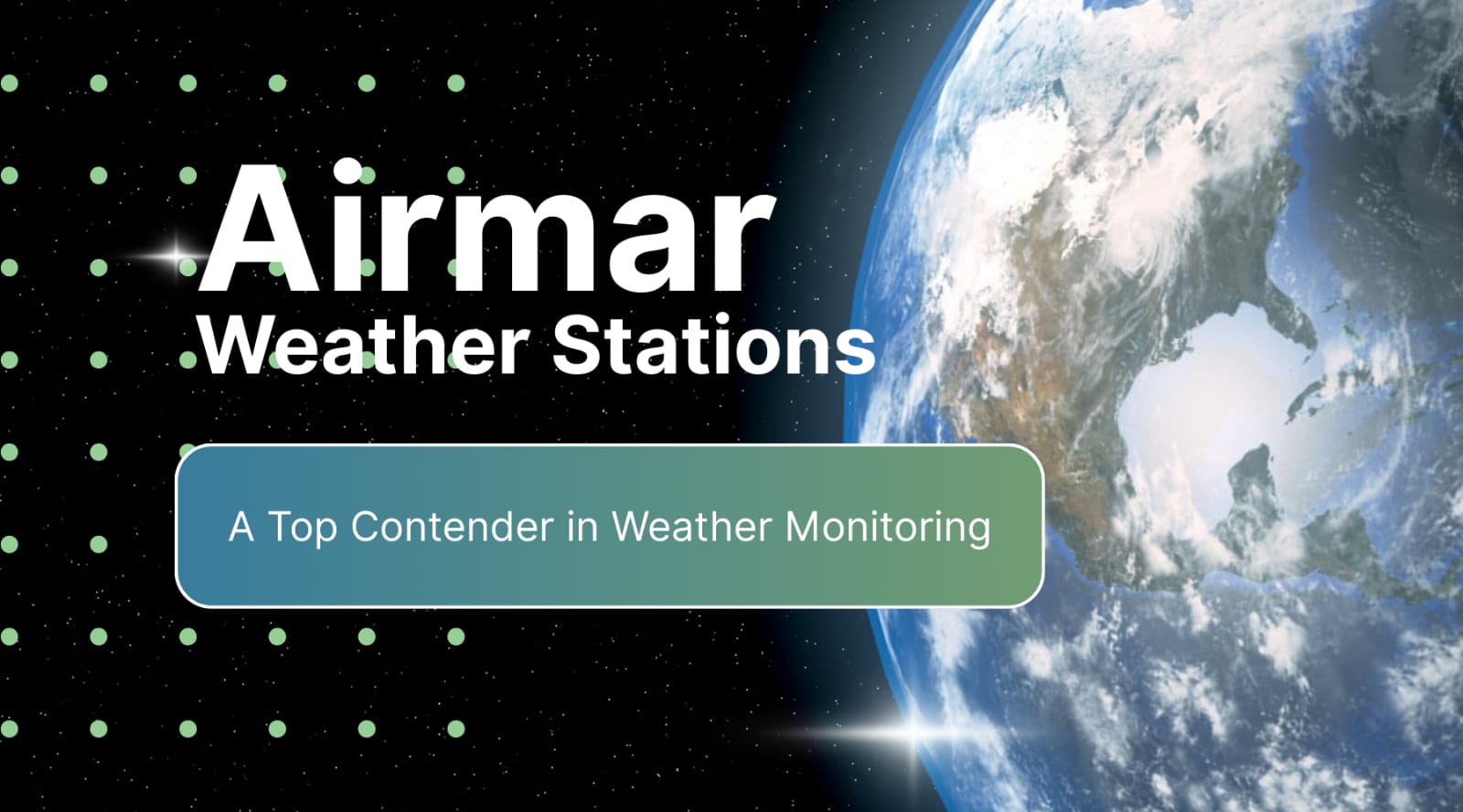(866)223-5699
(866)223-5699

Airmar Technology Corporation is a world leader in ultrasonic sensor technology, known for its high-quality weather stations and marine instrumentation...

1. Exceptional Accuracy and Precision
Airmar weather stations deliver highly precise readings for all key parameters such as wind speed and direction, temperature, barometric pressure, and more...
2. Rugged, Durable Design for All Conditions
Airmar's weather sensor housings are rated IPX6 or higher for water ingress, meaning they resist heavy rain and splashing waves easily.
3. Cutting-Edge Innovation and Sensor Technology
Airmar has led the industry in innovation by incorporating advanced sensor technology and clever design features.
4. All-in-One Convenience and Easy Integration
Airmar weather stations are all-in-one multi-sensor units, which makes them extremely convenient and easy to integrate.
5. Proven Performance in Professional Applications
Airmar weather stations aren't just for backyard enthusiasts, they are used by the likes of the U.S. Coast Guard, research scientists, and commercial mariners.

| Model | Distinct Features | Ideal Users / Applications | Key Technical Specs |
|---|---|---|---|
| Airmar 110WX | Ultrasonic wind, measures wind, air temp, barometric pressure, optional humidity module | Stationary weather monitoring on land or fixed marine sites | IPX6 rating, NMEA 0183 & 2000 output, ±0.3°C temp accuracy |
| Airmar 150WXRS | Includes GPS, 2-axis compass, acoustic rain sensor, solar shield for temperature accuracy | Land-based weather stations, agriculture, environmental monitoring | Acoustic rain measurement, compass accuracy, IPX6 rating |
| Airmar 200WX | Full multisensor suite, 3-axis compass and gyro, internal GPS, true wind calculation | Marine and mobile applications, boats, weather vehicles | Wind speed ±5, ±1 static compass accuracy, IPX6/IPX7 variants |
| Airmar 220WXH | Heated housing for ice prevention, marine-grade durability | Extreme cold climates, commercial marine, arctic research | Heated for anti-icing,± compass accuracy, IPX6 rating |

With several excellent models in Airmar’s lineup, how do you choose the one that fits your requirements? It largely comes down to your application and which features matter most:
In summary, Airmar has a weather station for almost every scenario. By considering where and how you’ll use it – stationary vs. mobile, land vs. marine, temperate climate vs. extreme cold, etc. – you can narrow in on the model that best fits your needs. All Airmar stations share the brand’s hallmarks of accuracy, durability, and innovation, so you really can’t go wrong. It’s mostly about matching the station’s feature set to your application.
Airmar weather stations have earned their place among the top contenders in the market by checking all the boxes: accuracy, durability, innovation, and user-friendly integration. Whether you’re an agronomist, a sailor, a scientist, or simply a serious weather enthusiast, Airmar offers a solution that will deliver high-quality data with minimal fuss. If you’re ready to upgrade to a professional-grade weather monitoring solution, consider the reasons above and match a model to your needs. Airmar’s legacy in sensor technology and its proven performance in the field make it a brand you can invest in with confidence.
Call to Action: Explore the full range of Airmar weather stations on our website. Visit the Airmar Weather Stations page on WeatherScientific.com to compare models, view detailed specs, and find the perfect Airmar station for your weather monitoring needs. Experience the difference that a high-quality Airmar WeatherStation can make in your environmental observations!

1. What makes Airmar weather stations different from other brands?
Airmar weather stations stand out due to their ultrasonic wind sensors with no moving parts, rugged durability, advanced sensor technology, and all-in-one compact design.
2. Are Airmar weather stations suitable for marine applications?
Yes! Many Airmar models, such as the 200WX and 220WXH, are specifically designed for marine use, providing true wind calculations even on moving boats.
3. How accurate are Airmar wind sensors?
Airmar ultrasonic wind sensors typically offer wind speed accuracy within 5% and wind direction accuracy within ±3, making them highly reliable.
4. Do Airmar weather stations require regular maintenance?
No, Airmar weather stations are designed to be maintenance-free thanks to their solid-state ultrasonic sensors and no moving parts.
5. Can I use an Airmar weather station in cold climates?
Yes, the Airmar 220WXH model includes a built-in heater to prevent ice buildup, making it perfect for cold and icy conditions.
6. What data do Airmar weather stations measure?
Most Airmar models measure wind speed, wind direction, temperature, barometric pressure, and some also include humidity, GPS, and precipitation sensors.
7. How do Airmar weather stations integrate with other systems?
Airmar weather stations output data in NMEA 0183 and NMEA 2000 formats, making them easy to integrate with boats, weather monitoring software, and industrial systems.
8. Can I use an Airmar weather station for personal weather monitoring?
Absolutely! Airmar weather stations are used by both professionals and serious weather enthusiasts who need high-quality, accurate weather data.
9. Which Airmar model is best for stationary land use?
The Airmar 150WXRS is great for land-based weather monitoring, as it includes an acoustic rain sensor and enhanced temperature accuracy with a solar shield.
10. Where can I buy an Airmar weather station?
You can purchase Airmar weather stations from WeatherScientific.com.
Leave a comment